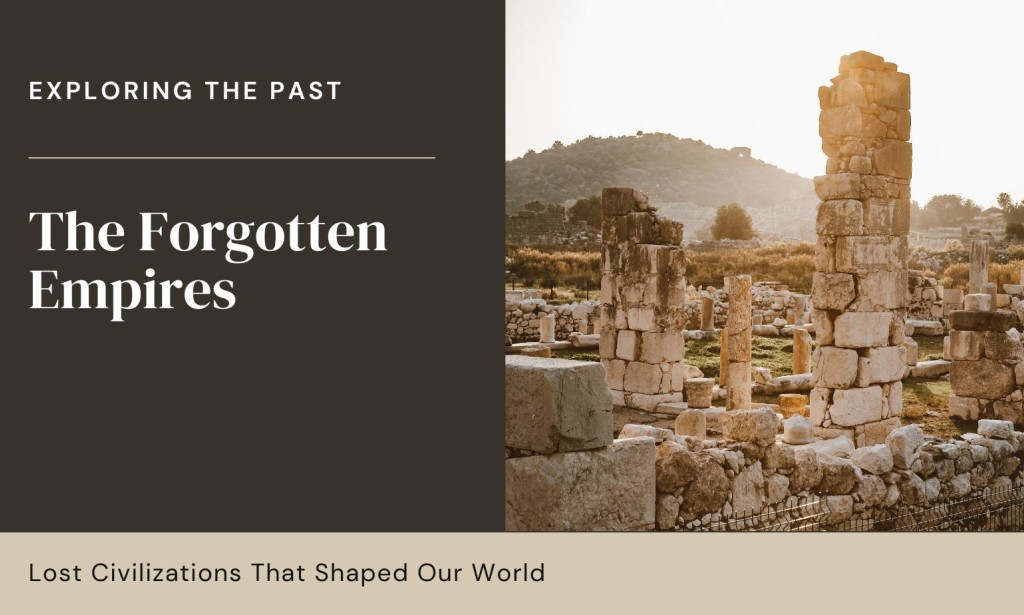Introduction: The Civilizations That Time Erased
History often focuses on well-known empires like Rome, Egypt, Greece, and China, but what about the civilizations that thrived before and alongside them?
Some of these lost empires were technologically advanced, powerful, and influential, yet they disappeared due to war, climate change, or simply the passage of time. This article explores the mysteries and legacies of some of history’s forgotten superpowers—kingdoms that shaped our world but are rarely discussed in textbooks.
1. The Kingdom of Aksum (Ethiopia & Eritrea, 100 AD – 940 AD)
Why It Matters:
✅ One of the earliest African superpowers
✅ Controlled Red Sea trade routes, linking Rome, India, and Arabia
✅ Developed an advanced written script (Ge’ez)
What Happened to It?
Aksum was one of the first African nations to adopt Christianity (4th century).
Declined due to climate change, overuse of resources, and Persian-Arab invasions.
Some believe the Queen of Sheba’s descendants ruled here.
🚀 Legacy: Ethiopia still uses the Ge’ez script, and many of Aksum’s cultural traditions remain.
2. The Hittite Empire (Anatolia, 1600 BC – 1178 BC)
Why It Matters:
✅ Pioneered iron weaponry, helping launch the Iron Age
✅ One of the first civilizations to sign a peace treaty (with Egypt after the Battle of Kadesh)
✅ Mastered chariot warfare
What Happened to It?
Destroyed during the Bronze Age Collapse (c. 1177 BC).
Climate change, invasions, and economic issues weakened its power.
Hittites influenced later cultures like the Greeks and Romans.
🔍 Legacy: The concept of written treaties and early diplomatic practices stem from the Hittites.
3. The Muisca Confederation (Colombia, 600 AD – 1600 AD)
Why It Matters:
✅ The civilization behind the legend of El Dorado
✅ Skilled in goldsmithing, astronomy, and irrigation
✅ Had a mathematical calendar system ahead of its time
What Happened to It?
Conquered by Spanish colonizers in the 1500s.
Gold obsession led to the exploitation of resources and destruction of Muisca culture.
Their rituals inspired the Spanish search for El Dorado—a mythical city of gold.
🏆 Legacy: The Muisca’s goldworking techniques still influence modern jewelry making.
4. The Indus Valley Civilization (Pakistan & India, 3300 BC – 1300 BC)
Why It Matters:
✅ One of the earliest urban civilizations—larger than Egypt or Mesopotamia
✅ Had advanced drainage systems, suggesting a high level of city planning
✅ Possibly had equal social structures—no palaces or massive tombs found
What Happened to It?
Disappeared due to climate shifts, declining trade, and possible invasions.
The script remains undeciphered, so much of its history is still a mystery.
🌍 Legacy: Modern Indian and Pakistani cultures still reflect Indus Valley traditions.
Why These Civilizations Still Matter
💡 Many of these forgotten empires laid the foundation for modern trade, diplomacy, and technology.
💡 Their fall teaches us lessons about sustainability, war, and adaptation.
💡 As we uncover more archaeological evidence, history itself is being rewritten.
📜 Final Thought:
History isn’t just about what we remember—it’s also about what we’ve forgotten. As new discoveries emerge, these civilizations may regain their rightful place in the world’s story.
Would you like to see more forgotten civilizations in another article? Let me know! 😊


You must be logged in to post a comment.